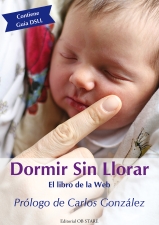- Vie, 08 Abr 2011, 12:03
#390012
de un blog de un pediatra (lo he mirado por encima, pero está en la línea de lo que pego debajo), luego hay respuestas y comentarios para todos los gustos
http://drgarcia-tornel.blogspot.com/200 ... o-ojo.htmlesto está sacado de la página science direct (es loq ue pegué el otro día, pero con un párrafo más), y cuenta la historia parececida a el blog
VICKS VAPORUB INDUCES MUCIN SECRETION, DECREASES CILIARY BEAT FREQUENCY, AND INCREASES TRACHEAL MUCUS TRANSPORT IN THE FERRET TRACHEA. Abanses JC, Arima S, Rubin BK.
Chest 2009;135:143– 8.
This animal study out of the Wake Forest School of Medicine measured the effect of Vicks VapoRub® (VVR; Proctor & Gamble, Cincinnati, OH) on ferret airway inflammation and mucociliary function. First, the authors excised trachea specimens from healthy ferrets, applied VVR and measured mucin secretion, mucociliary transport velocity, and ciliary beat frequency.
Secondly, intubated ferrets, both healthy and those exposed to bacterial endotoxin (lipopolysaccharide, inducing airway inflammation) were exposed to inhaled placebo or VVR. Mucin secretion and lung water were then measured. In the in vitro VVR-exposed group, mucin secretion was increased by 63% over controls, and ciliary beat frequency was decreased by 35%. In the in vivo group, the bacterial endotoxin decreased mucociliary transport velocity (MCTV) in both normal and VVR-exposed airways, and VVR increased MCTV by 34% in inflamed airways. Neither airway inflammation nor VVR increased lung water. The authors conclude that VVR stimulates mucin secretion, decreases ciliary function, and increases MCTV in the inflamed airway, findings comparable to the acute inflammatory stimulation seen with exposure to airway
irritants.
Comment: The impetus for this study was a case report regarding an 18-month-old toddler exposed to Vicks VapoRub during an upper respiratory infection who developed respiratory distress and hypoxia. The results of this study indicate that the active ingredients of VVR are ciliotoxic and mildly proinflammatory. The clinical significance of the results in humans is unknown, but parents of small children should be aware of the possible dangers inherent in VVR during upper respiratory infection.
En resumen, explica el caso de una niña de 18 meses que tuvo distrés respiratorio e hipoxia tras la administración del compuesto, y que se hicieron pruebas en modelos animales (tráqueas de hurones, que tienen los tejido, por lo que dicen, similares a los nuestros). También dice que se desconoce si el efecto es el mismo en humanos.
Intubaron a los hurones y determinaron parámetros como la secreción de mucosidad (que se incrementó en un 63%), y el movimiento ciliar (que disminuyó en un 35%), así como otros parámetros similares a la exposición a compeustos irritantes.
También en este resumen de la revista Chest (que tiene prestigio, vamos no es el 10 minutos9, pone que los padres de niños pequeños deberían tener en cuenta los posibles riesgos de empleal Vicks Vaporub (VVR) en niños con infecciones respiratorias de las vía superiores.
En el blog que os menciono arriba, también explica algo así como que por los vapores, el cerebro "se cree" que tiene menos moco, aunque paradójicamente tenga más debido a la propia presencia del producto, y que por eso dejamos de toser con su aplicación.
De cualquier forma, a mi más peligroso que el mentol, me parece el alcanfor que tiene (como expliqué en el otro post).
Un beso,
ilargi
















 Por una parte el peligro de ingesta accidental puede resultar fatal (vamos, muy muy grave).... y si, si, ....ya sabemos que nuestros hijos no se comen las medicinas, (ni antaño parecía lógico pensar que los niños tenían que ir atados en el coche, por poner un ejemplo...., y hoy en día ni se nos ocurre que vayan sueltos)
Por una parte el peligro de ingesta accidental puede resultar fatal (vamos, muy muy grave).... y si, si, ....ya sabemos que nuestros hijos no se comen las medicinas, (ni antaño parecía lógico pensar que los niños tenían que ir atados en el coche, por poner un ejemplo...., y hoy en día ni se nos ocurre que vayan sueltos)




